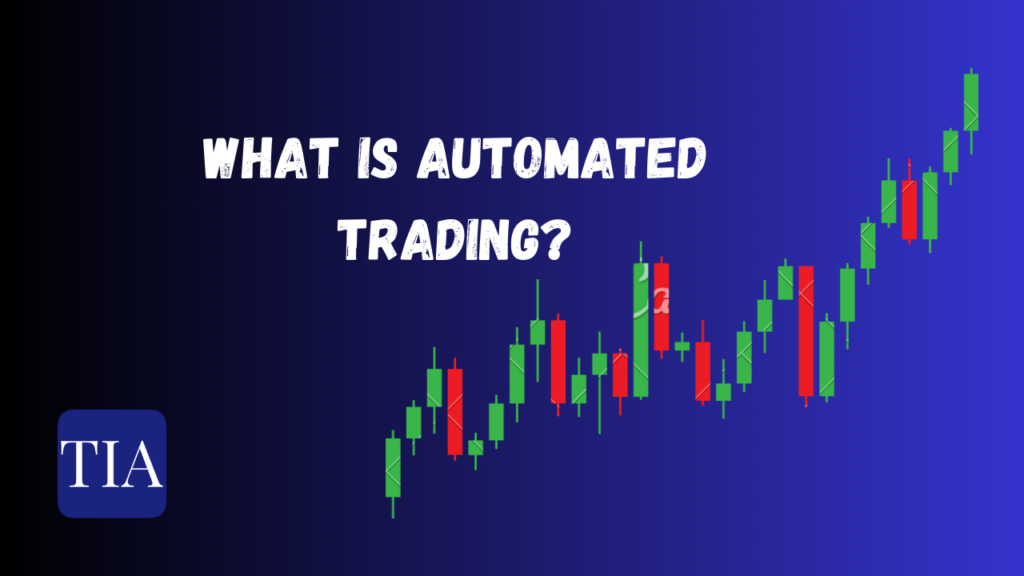Automated trading involves leveraging algorithmic trading to create, buy and sell orders on the stock markets or on exchanges. It is essentially a computer programme based on some predefined rules that aids both trade entries and exits. Automated trading takes into account technical analysis as well as mathematical and statistical calculations.
Table of Contents
Meaning Of Automated Trading

As a computer programme, automated trading can be customized to specific trading strategies wherein it places orders based on these strategies and predetermined guidelines, fed into the programme. It uses algorithmic trading based on entry and exit rules determined by the investors. Such a system provides an all inclusive trading strategy based on fundamental technical indicators. Technical indicators are heuristic in nature, shedding light on the price, volume and/or open interest of a security or contract used by traders.
Owing to its independent nature of functioning, automated trading system involves constant monitoring of finance prices and simultaneous trading takes place if predetermined parameters are meted out. Nonetheless, the trade entry and exit rules can be either based on moving average crossover or on complicated trading strategies based on comprehensive programming languages specific to different trading platforms.
Further, trading platforms are quintessential in the effective functioning of automated trading systems based on algorithms. While automation has helped to execute fast and prompt trades, such platforms initiate multiple trades, via a single application or software. Hence, this interdependence between trading platforms and automated trading systems provide a conducive trading domain to traders.
How does auto trading work?
The first step towards creating such a programme involves choosing of the trading platform and the parameters for the ensuing trading strategies. These parameters( rules and conditions) are relative to trading experiences.
The second step necessitates to customize the algorithm to be followed by the auto-trading system, in the process of making. However, it focuses only on the execution part of the trading and as such is not involved in the decision making part of the trade, automated trading involves complete automation in trading activities.
The Pros and Cons of Using Auto Trading Strategy:
Pros of Automated Trading Are as follows:
- Minimizing Emotions: Automated trading helps to take and execute trade devoid of emotions, often accompanying the traders. Additionally, it also helps traders from overtrading at every given opportunity.
- Backtesting: Being a programme in itself, automated trading must be based on an absolute set of parameters, with no room for interpretation and this is possible by using the technique of backtesting. Backtesting enables traders to initiate a trading strategy using historical data, which helps to shed light on the possible outcome following careful vetting of the risks and profits involved in the process of actual trading.
- Preserve Discipline: Considering that automated trading emphasizes on trading plan, which considers variables like time, risk and the investor’s objectives, that is, it’s the roadmap for trading, it thus helps ensure considerable discipline even in volatile markets. Automated trading basically helps to trade the plan and thereby provides a conducive trading atmosphere.
- Improving Order Entry Speed: Backed with a proper set of parameters as well as viable historical data, involving both the aspects of profit and risk, automated trading hence provides a seamless experience through generating orders on the stock markets and exchanges.
- Diversifying Trading: Automated trading further helps to trade with multiple accounts and various trading strategies at one time to the user. This is made possible because such a system can scan trading opportunities across multiple markets, simultaneously generating orders and monitoring trade.
Cons of Automated Trading Are;
- Mechanical Failure: Being technologically backed, automated trading is always open to technical malfunctions, which can indeed be dangerous from a trading perspective.
- Monitoring: Owing to potential technical failures such as connectivity issues, power loss or computer crash, automated trading demands constant supervision to avoid anomalies in the trading process.
- Over Optimization: To prevent over optimization, traders are constantly required to choose, manage and adjust the trading strategies used in the systems. Often strategies based on backtesting may fail to stand the test of time during executions in live markets.
- Requires Technical Knowledge: Automated trading necessitates knowledge about coding, programming and software management, skills if not possessed properly can result in faulty strategies thereby incurring huge losses.
Lastely, the efficacy of any automation trading system depends on the various trading strategies it can put to use. These strategies lay the foundation of the decision-making process, that is, when to enter or exit trades, how much to invest and how much to trade. Some of the trending trading strategies that are widely in vogue in automated trading trend are:
- Trend-Following Strategies: These strategies help to keep the momentum of the market by identifying and capitalizing on the price trends in the markets.
- Mean Reversion Strategies: They identify overbought or oversold conditions in the market and accordingly take positions opposite to the prevailing trend.
- Breakout Strategies: They help to identify the key support and resistance levels and help to enter trades when prices break out of these levels, thus they seek to profit from significant price movements.
- Range-Bound Strategies: These identify the upper and lower boundaries of a trading range in order to maximize profit.
- Scalping Strategies: These strategies emphasize short-term price movements and targets for small profits.
- Statistical Arbitrage Strategies: They focus mainly on cumulative small, regular profits over an extended period of time by taking advantage of statistical misalignments in pricing.
Conclusion
Taking into account the pros and cons as well as the deploying of sound and effective trading strategies and of using the correct sets of parameters, automated trading indeed provides a promising future to traders. It ensures continuous trading, capitalizing on opportunities, reduction of human error and access to advanced analysis,thereby dispensing a competitive edge to traders.